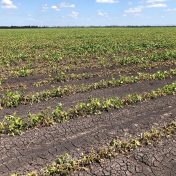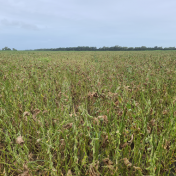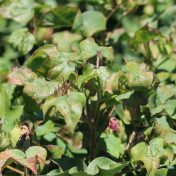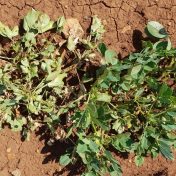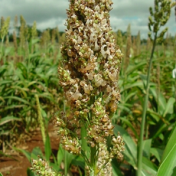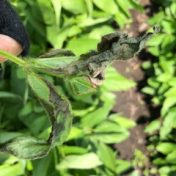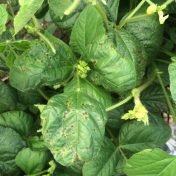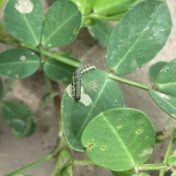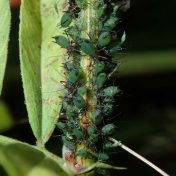After the wet weather in recent weeks there have been several reports of powdery mildew in mungbeans across Queensland and northern New South Wales, and Fusarium wilt has been found in several southern Queensland crops. Monitor crops closely for disease symptoms, and contact our plant pathologist, Lisa Kelly at [email protected] or 0477 747 040 for further information on disease diagnosis…. Read more »
Soybean moths are on the move in the tropics with devastating populations reported in the Ingham region of NQ (see photo). Fuelling the outbreaks was a recent extreme heatwave event which saw temperatures ranging between 29-40 degrees Celsius for 12 straight days. While the heat may have made people lethargic, it greatly hastened the rate of larval development and many… Read more »
Leafhoppers (also known as jassids) rarely cause damage in cotton, so some unusual symptoms (leaf chlorosis that presented a little like cotton bunchy top disease) across several cotton fields in Queensland’s Burnett region last month that appeared to be associated with leafhoppers had both taxonomists and virologists searching for an explanation. Both the damage and leafhoppers present shared many of… Read more »
Root rot reported in Burnett peanuts The DAF pathology team has recently received peanut samples with Neocosmospora root rot from crops growing in the Burnett region. Neocosmospora root rot is a sporadic but potentially severe disease caused by the fungus Neocosmospora vasinfecta var. africana. Outbreaks have occurred previously in the Burnett region in 2005, and also in the Emerald region… Read more »
The DAF pathology team has recently received reports of ergot in sorghum panicles growing near Toowoomba in southern Queensland. Sorghum ergot is caused by the fungus Claviceps africana. The disease can result in poor seed set, lower grain quality, and can cause harvesting issues due to the sticky honeydew on sorghum panicles. Infected grain will be replaced by fungal sclerotes… Read more »
How long should my beat sheet stick be? is a question that was asked at a recent Accredited Mungbean Agronomist Course. A common misconception is that a beat sheet stick should be as long as the beat sheet is wide. A standard beat sheet is usually at least 1.5 m across, but the stick should only be 1 metre long…. Read more »
Late damage has been reported recently in an Onyx-AU (PBR*) black gram crop in the Burdekin. The most obvious damage was dead leaves, but closer inspection found full sized larvae (3 mm) and pupae in the petioles of damaged leaves. The causal agent was common bean fly Ophiomyia phaseoli (Agromyzidae), but in this instance control was not warranted, as the… Read more »
Halo blight, caused by a bacterial pathogen (Pseudomonas savastanoi pv. phaseolicola) is one of the major diseases of beans world-wide, particularly in temperate regions. In mungbean, symptoms on leaves start as small, water-soaked lesions that are surrounded by a yellow-green halo (Figs 1 and 2). Symptoms may be visible at the 1st or 2nd trifoliate leaf stage and are often… Read more »
Since early 2020, growers and agronomists have been nervous about the prospect of fall armyworm (FAW; Spodoptera frugiperda) invading their crops. So far, the majority of significant and damaging FAW infestations have been recorded from sweet corn, maize, and sorghum crops, with some isolated outbreaks in horticultural crops such as ginger and capsicum. Occurrences in other crops have been a… Read more »
After an initial report in Sydney, faba bean aphid (FBA – Megoura crassicauda) was confirmed in September 2017 in faba beans in Tamworth and Breeza. Very few commercial faba bean crops were sown during the drought in 2018 and 2019, however seasonal conditions then improved and FBA was found in July 2020 in faba bean trials in Grafton. This infestation… Read more »
